An analysis of over nine million samples of coccoliths whose ages span several million years has led scientists to conclude that changes in Earth’s orbit may have influenced changes in the size and shape of the microscopic algae. Plus, Europe contemplates geologic threats, and a comet is in this week’s What’s Up.
Podcast
Show Notes
Galactic rotation changes with the stars
- ICRAR press release
- “xGASS: characterizing the slope and scatter of the stellar mass – angular momentum relation for nearby galaxies,” Jennifer A. Hardwick et al., to be published in Monthly Notices of the Royal Astronomical Society (preprint on arxiv.org)
Found: Larger than expected black hole
- McDonald Observatory press release
- “Dynamical Analysis of the Dark Matter and Central Black Hole Mass in the Dwarf Spheroidal Leo I,” M. J. Bustamante-Rosell et al., 5 November 2021, The Astrophysical Journal
Complex organic molecules found in remote galaxy
- ALMA press release
- “The Detection of a Hot Molecular Core in the Extreme Outer Galaxy,” Takashi Shimonishi, Natsuko Izumi, Kenji Furuya, and Chikako Yasui, 1 December 2021, The Astrophysical Journal
Remembering Earth is an active planet
- GEOMAR press release
- PDF: Position Paper “Marine geohazards: Safeguarding society and the Blue Economy from a hidden threat”
Tiny life documents big changes over 2.8 million years
- CNRS press release
- “Cyclic evolution of phytoplankton forced by changes in tropical seasonality,” Luc Beaufort et al., 1 December 2021, Nature
What’s Up: Comet Leonard brightening toward unaided visibility
Transcript
Hello and welcome to the Daily Space. I am your host Dr. Pamela Gay, and I am here to put science in your brain.
Sometimes I look at observational astronomy results and realize I have no idea why the universe does some of the things it does and am really glad I am not a theoretical astronomer and responsible for figuring out some of these mysteries.
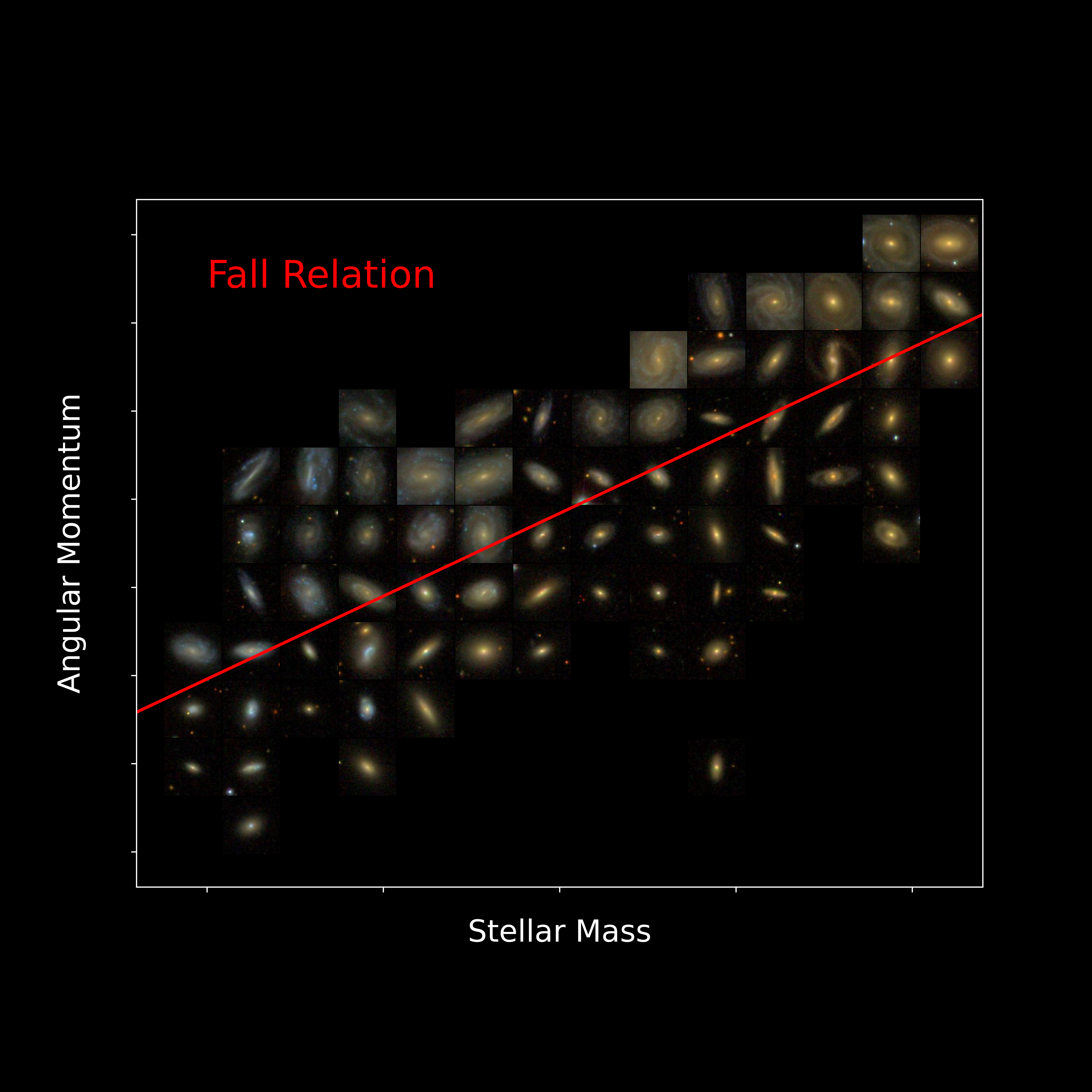
Using archival data from the Arecibo Radio Observatory, astronomers have revisited an idea from the 80s. In 1983, Michael Fall suggested that the amount of mass tied up in a galaxy’s stars and its rotation rate should couple. I’m specifically saying stellar mass not the total mass of the galaxy. The idea is that the more mass in a galaxy is in stars, the more angular momentum it’s going to have. This is a weird new version of the rotating hoop vs rod vs disk problem from physics.
While this idea was put forth in 1983, we didn’t have the ability to actually sort out if Fall was right until now, and graduate student researcher Jennifer Hardwick looked at 564 galaxies using Arecibo data and images from optical surveys, and she found that yes, there is a relationship. As the amount of mass tied into stars goes up, the angular momentum of how the entire galaxy rotates goes up.
This raises a whole lot of questions that go back to all the reasons college students hate angular momentum and calculating moments of inertia and tells us the gas evolution of a galaxy makes things a lot more interesting – or at least more complicated – than previously thought. With the loss of Aricebo, it will be many years before this work can be advanced too much more; we need to wait for the Square Kilometer Array and other next-generation telescopes to become active before we can learn more.
In a lot of ways, astronomy is nothing more than the study of how mass keeps getting redistributed over the history of the universe, and it is in the surprising ways that mass congregates that some of the most interesting stuff is found. Back when I was in grad school, it was discovered that, more or less, the orbits of stars in the bulgy parts of galaxies are directly related to the size of the supermassive black holes they contain.
But then, every once in a while, a system comes along and refuses to follow any rules.
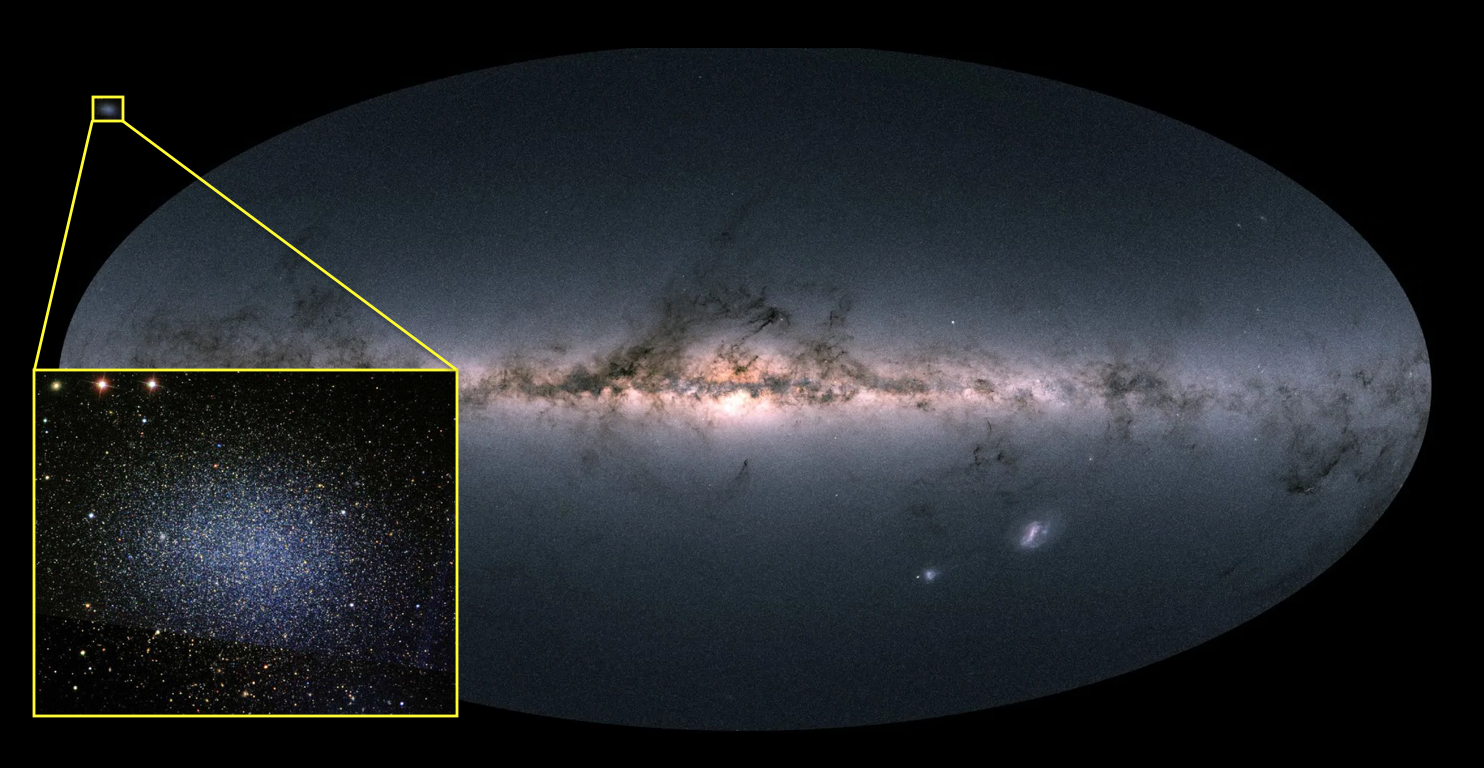
In studying the nearby dwarf galaxy Leo I, researchers from the University of Texas recently discovered a black hole nearly the same size as the one in the core of the Milky Way. The bulgy bits of Leo I are a lot smaller than the bulgy bits of our galaxy, and the two should not have similar-sized black holes. Research lead María José Bustamante states simply: …there is no explanation for this kind of black hole in dwarf spheroidal galaxies.
This work is published in The Astrophysical Journal and is going to force folks to spend the next many years trying to figure out how in the Universe this can happen. The Universe really is more creative than we are in what it figures out how to do.
But for all the things we can’t understand, there are still some cool things that nicely match with expectations, and we’re going to end this segment with one of those pleasing results. Researchers led by Takashi Shimonishi used the Atacama Large Millimeter/submillimeter Array (ALMA) to look for stars forming in the outskirts of the galaxy. These outer suburbs are largely untouched by the materials formed in generation after generation of stars in the inner regions of the Milky Way, and any stars forming will act more like stars in the early universe, than the enriched stars we see forming nearby today.
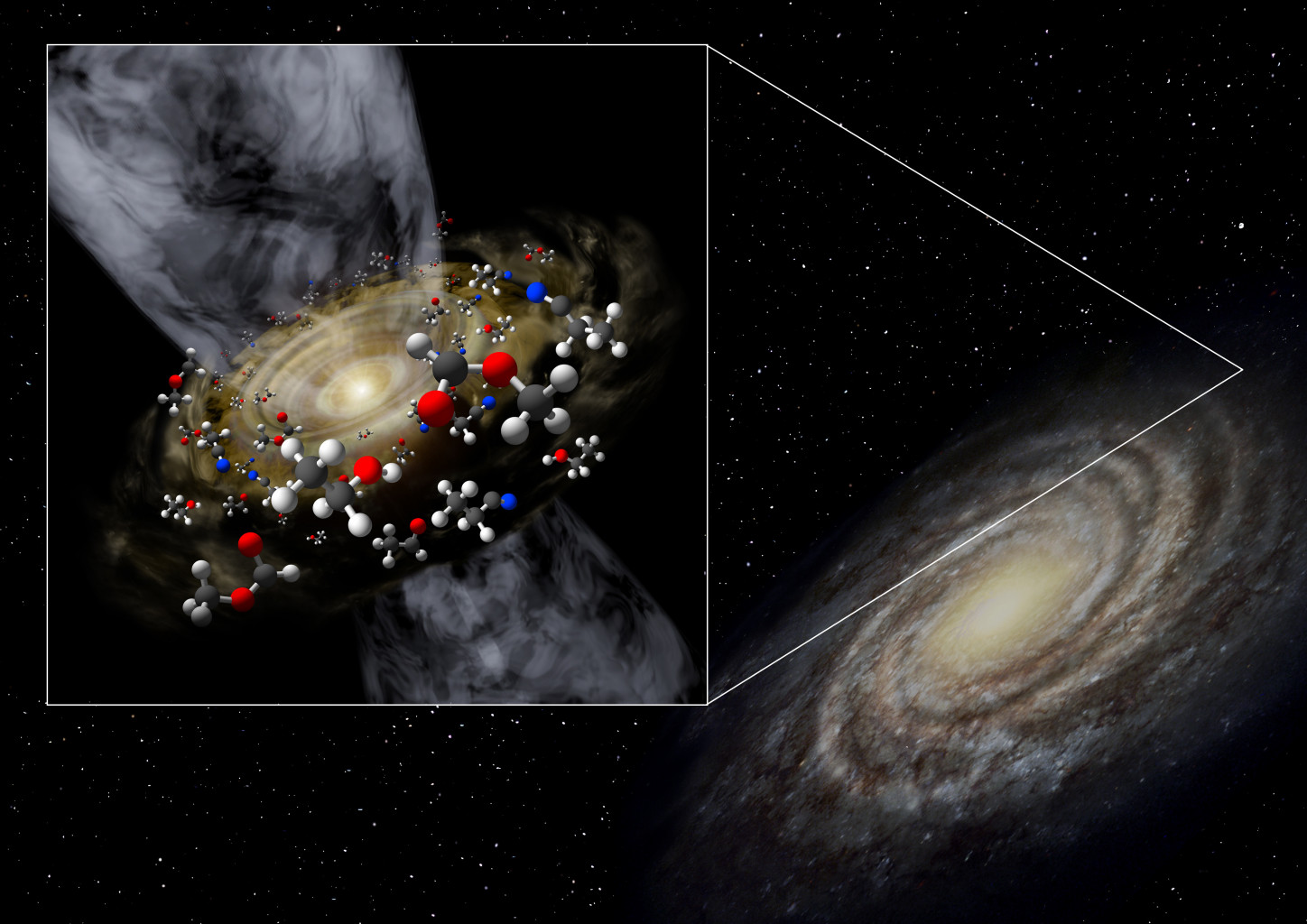
And they found a star-forming region in these outer reaches, and thanks to the amazing powers of ALMA, researchers could measure carbon-, oxygen-, nitrogen-, sulfur-, and silicon-bearing molecules, including complex organic molecules. This demonstrates that even the most remote and raw regions of our galaxy have the chemistry needed to build prebiotic molecules. This indicates that, while heavy elements are more scarce in the outer galaxy, complex chemistry can still find a way. According to Shimonishi: The interstellar conditions to form the chemical complexity might have persisted since the early history of the Universe.
I once thought that maybe life on Earth was as old as life in our universe could be because it takes time to build the stuff of worlds and people. This shows I was wrong and makes the question of “how common is life?” even more interesting to consider.
Several years ago, I was able to travel to Lisbon to work with the Galileo Teacher Training Program. Sitting in a small cafe, I was struck by the beautiful wreckage of an old cathedral. When I asked my collaborator about it, she told me a story I’d never heard.
In 1755, an earthquake struck the region, shaking the landscape for more than three minutes with a quake estimated to be between magnitude 8.5 and 9. With an epicenter located out at sea, the devastation didn’t end with the end of the shaking. It was followed by a tsunami – a hazard unfamiliar to Europeans. According to historical reports, the water retreated from the Rio Teja estuary and revealed shipwrecks, leading thousands of confused people to race into the waterway in search of treasure. Unfortunately, a nine-meter wave was on its way, and thousands of people who survived the quake were lost to the water.
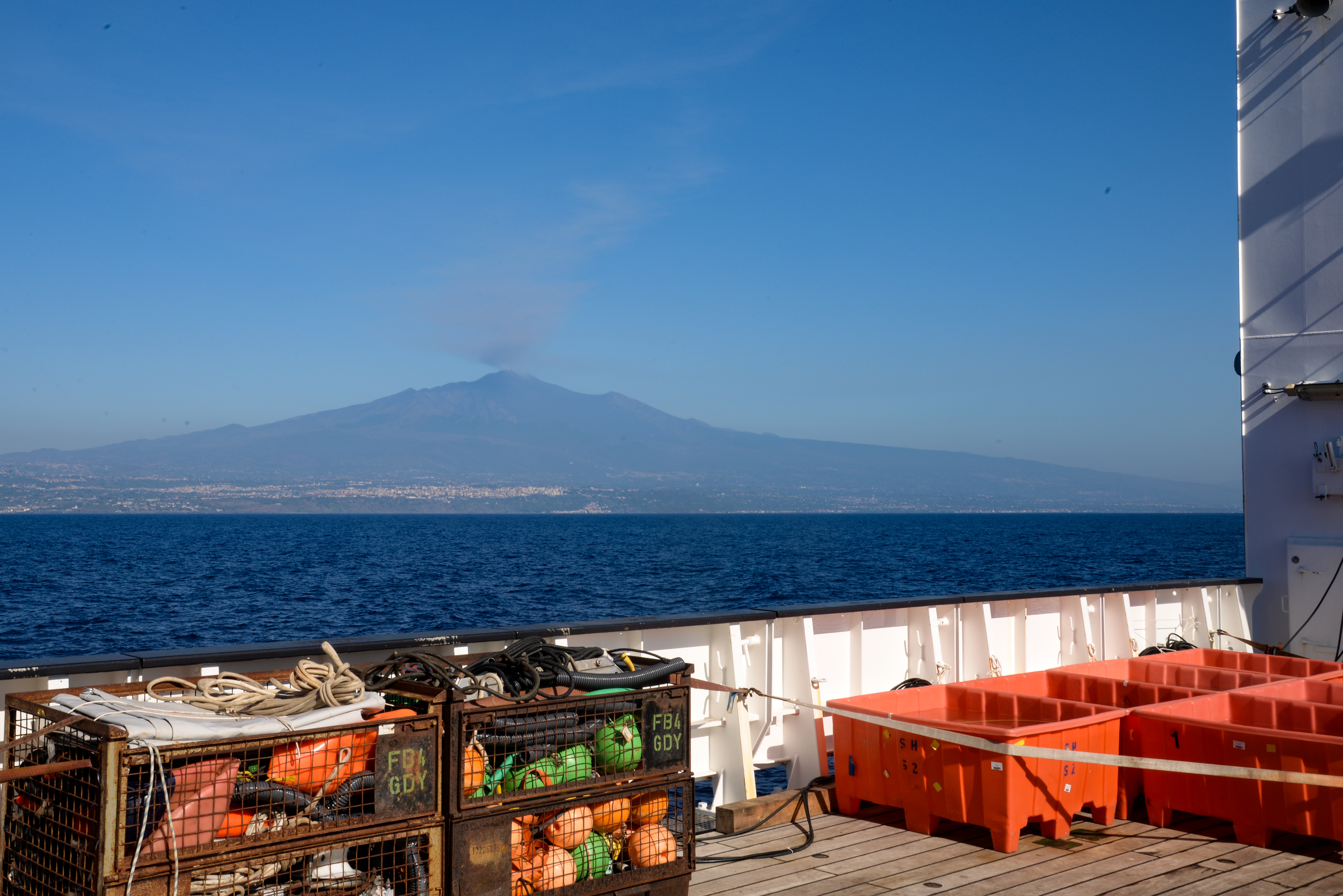
The earthquake was on the Azores-Gibraltar Faultline, and there is no reason to believe such an event can’t happen again. That devastated cathedral I could see from the cafe was a reminder that our world is alive and will destroy even the most beautiful of human creations without thought or care.
We really need to plan for these events everywhere and not just in the most active areas of our world.
During the eighth European Marine Board Forum focused on Supporting the Ocean Decade in Europe, researchers began work on a now published position paper that lays out things governments and corporations need to think about as we build and maintain global infrastructure. As an astronomer, I was unaware of all the ways planetary geology can wreck our daily life.
Beyond the understood issues of earthquakes and volcanic eruptions and the tsunami they can trigger, researchers also detailed issues with things as mundane as the slow migration of sandbars across the ocean floor. While generally of concern only to navigators, these shifting sands can shift onto underwater cables and potentially damage them, to the point of potentially cutting off internet between continents.
Study organizer Heidrun Kopp puts it this way: The probabilities with which geological events such as earthquakes or volcanic eruptions occur have not changed over millions of years. But the magnitude of damage is increasing because coasts are becoming more densely populated, we have built ports and industrial facilities on the coasts and on the seafloor, and we’ve generally accumulated large values there.
It is stated in a press release from GEOMAR at the Helmholtz Centre for Ocean Research in Kiel that: …there is still a considerable need for research to better assess geological hazards in Europe’s seas. For example, there is still no high-resolution map of the seafloor that accurately shows the geological fracture zones and margins of the continental plates where earthquakes often occur.
Put another way, we need to develop the kinds of ocean floor maps that we have for the land. Unfortunately, studying the seafloor is something that is significantly harder and can’t be done with a well-placed set of satellites.
While we remain years to decades away from the kinds of ocean maps many might wish for, we can now focus on planning how we’ll recover when – not if – the next disaster occurs. For Europe at least, there is a clear understanding that folks will help each other, with Kopp explaining: If a natural disaster were to occur on Europe’s coasts, all European Union states would be involved – both in disaster relief and in financing reconstruction.
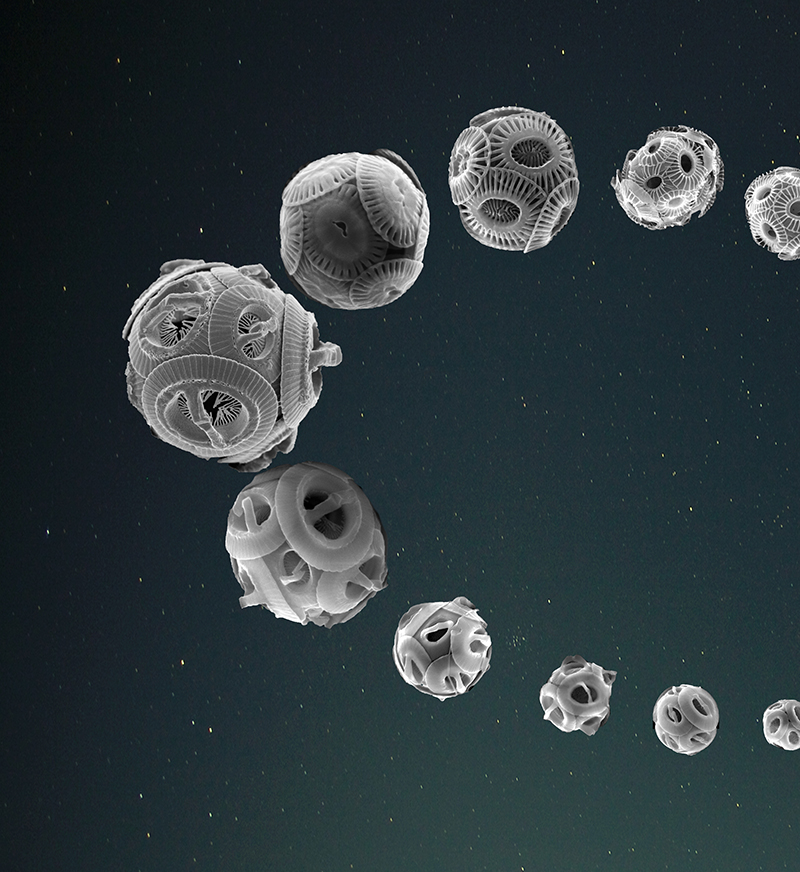
The Earth is the only planet we can currently explore in detail, and with almost 5000 planets known, that is a pretty frustrating reality. At least we have this one, and while using it as a lab experiment, interdisciplinary teams are forever finding new and creative ways to understand our world’s past as we wonder if what has happened here has also happened out there, among the stars.
One of the harder things to study is the effect of the Earth’s slowly changing orbit on the slowly changing life it carries. Evolution is a driving force of change, and local effects over the short term often dominate over the millennial changes of orbits. To figure if the orbital changes do have an effect, researchers turned to an ancient constituent of plankton, coccolithophores, to see if they record changes in their nearly three million-year fossil history.
These tiny lifeforms build up limestone plates, called coccoliths, that get left behind when the algae die. According to a new paper in Nature, researchers looked at more than nine million coccoliths that had been deposited on the ocean floor over 2.8 million years and examined them for changes over time.
This work was only possible thanks to automated microscopes and advances in computer vision that allowed most of the data to be classified by software. With this amazingly long baseline, they were able to find patterns of change over 100,000 and 400,000 years, with the pattern being one of a change in diversity; over time, they noticed the diversity in sizes of coccoliths changed, with the little critters sometimes being all about the same size and sometimes coming in a larger range of sizes.
The 100,000- and 400,000-year changes aligned with the Earth’s variation in orbit, as it wanders from having a very circular orbit as it has now to having a more flattened orbit like Mars currently has. With a circular orbit, the equatorial regions of the Earth experience little seasonal variation, and the winter in the north is no different than winter in the south. When the orbit is more elliptical, the seasons are more severe and vary more between hemispheres. This diversity of global weather is believed to lead to greater diversity in coccolith sizes but an overall decrease in the number of limestone shells.
And it turns out, this diversity in how and how many coccoliths were formed may have further influenced the environment. According to a press release from French National Centre for Scientific Research: …due to their abundance and global distribution, these organisms are responsible for half of the limestone (calcium carbonate, partly composed of carbon) produced in the oceans and therefore play a major role in the carbon cycle and in determining ocean chemistry. It is therefore likely that the cyclic abundance patterns of these limestone producers played a key role in ancient climates, and may explain hitherto mysterious climate variations in past warm periods. In other words, in the absence of ice, the biological evolution of micro-algae could have set the tempo of climates.
It amazes me that such small critters (if you can call algae a critter) can be responsible for so much science and so much influence. This is your reminder that even the smallest among us can have a mighty impact.
What’s Up
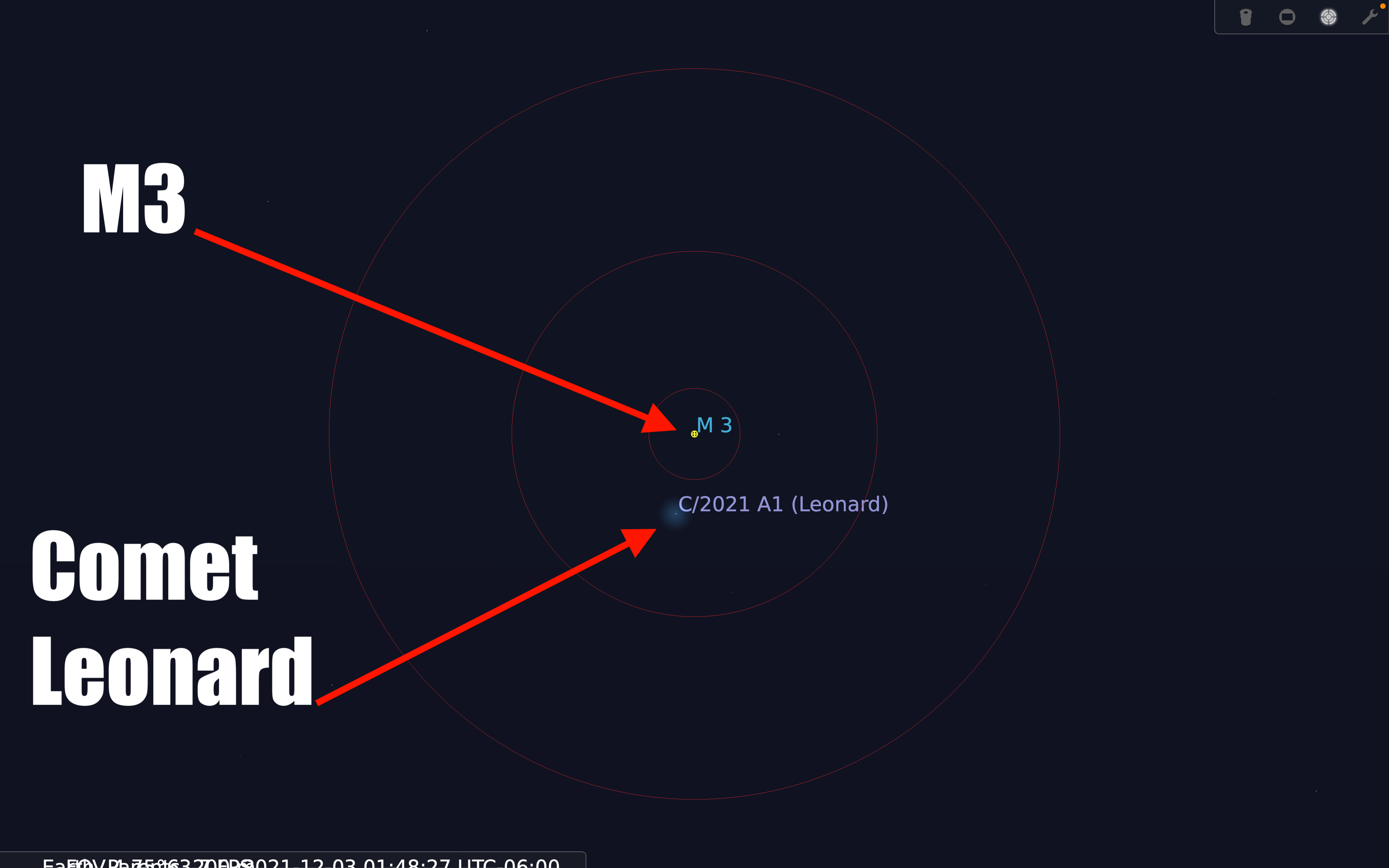
This week in What’s Up is not another moon phase or meteor shower, but a comet — specifically Comet C/2021 A1 Leonard.
If you remember last spring’s Comet C/2021 F3 NEOWISE, this comet will be like a slightly fainter sibling as it nears unaided visibility and becomes an easy binocular or small telescope object as it gets closer.
To find it this week, look between the end of the handle of the Big Dipper asterism towards the bright star Arcturus, or as they’d say in a planetarium, arc to Arcturus. Comet Leonard will be in between the last handle star and Arcturus. As the days go on, it will continue heading horizonward. Tomorrow, December 3 in the morning UTC, the comet will be less than a degree from Messier 3, a bright globular cluster in the constellation Canes Venatici.
A Telrad finder sight can help you find the comet and many other objects using the concept of star hopping, going from one bright star to other dimmer stars so you can find your deep-sky target. The Telrad has a reticle with circles at half a degree, two degrees, and four degrees, illuminated by a red light so you won’t lose your night adaptation. It’s simple to attach to your telescope, using an adhesive base. You can get more bases to use the same Telrad on different telescopes. You can get a Telrad sight from Amazon and support citizen science by using the Amazon affiliate link in the show notes for this episode.
To track this comet through the sky over the next year, you can use the free astronomy software Stellarium. This is a powerful tool for planning observing sessions, and it includes plugins for plotting different objects, from asteroids to satellites. You need to point the software at an updated source of orbital elements since this is a new comet, and Stellarium makes this a simple process. The details will be at a link on our show notes. Stellarium has a mode that projects the three rings of a Telrad sight on the simulation, so you can determine what way you need to move your scope and by how much to find objects.
The comet is going very fast, over 250,000 km/h; however, it doesn’t look like it’s going fast because it is very far away. Once you find it, make a note of where it is. After ten minutes or so, look at the position of the comet again. There should be a noticeable difference in position.
Comet Leonard was discovered by astronomer Alan Leonard on January 3, 2021, using the 1.5-meter Cassegrain telescope at the Mt. Lemmon Observatory north of Tucson, Arizona. Currently, it is visible in the northern hemisphere in the morning, through a telescope only since it’s at magnitude 10, but in early December, it will become visible in the evening sky and will brighten to unaided eye visibility, at about magnitude 4. Its closest approach to Earth is on December 12, and it will reach its brightest at Periapsis on January 3, 2022.
Comet Leonard is what’s known as a long period comet, with an orbit of about 80,000 years according to NASA’s Jet Propulsion Laboratory. It’s spent the last 35,000 years heading back into the solar system from the furthest point in its orbit, about 3,700 times the distance from the Earth to the Sun. Its periapsis, or closest point of its orbit around the Sun, is about halfway between the Earth and the Sun. This will be its final approach to the Sun, as the energy it gets from the approach will accelerate it beyond solar system escape velocity. Over the next few thousand years it will head back out of the solar system, never to return. This is truly a once-in-a-lifetime opportunity.
This has been the Daily Space.
You can find more information on all our stories, including images, at DailySpace.org. As always, we’re here thanks to the donations of people like you. If you like our content, please consider joining our Patreon at Patreon.com/CosmoQuestX.
Credits
Written by Pamela Gay and Erik Madaus
Hosted by Pamela Gay
Audio and Video Editing by Ally Pelphrey
Content Editing by Beth Johnson
Intro and Outro music by Kevin MacLeod, https://incompetech.com/music/


 We record most shows live, on Twitch. Follow us today to get alerts when we go live.
We record most shows live, on Twitch. Follow us today to get alerts when we go live.